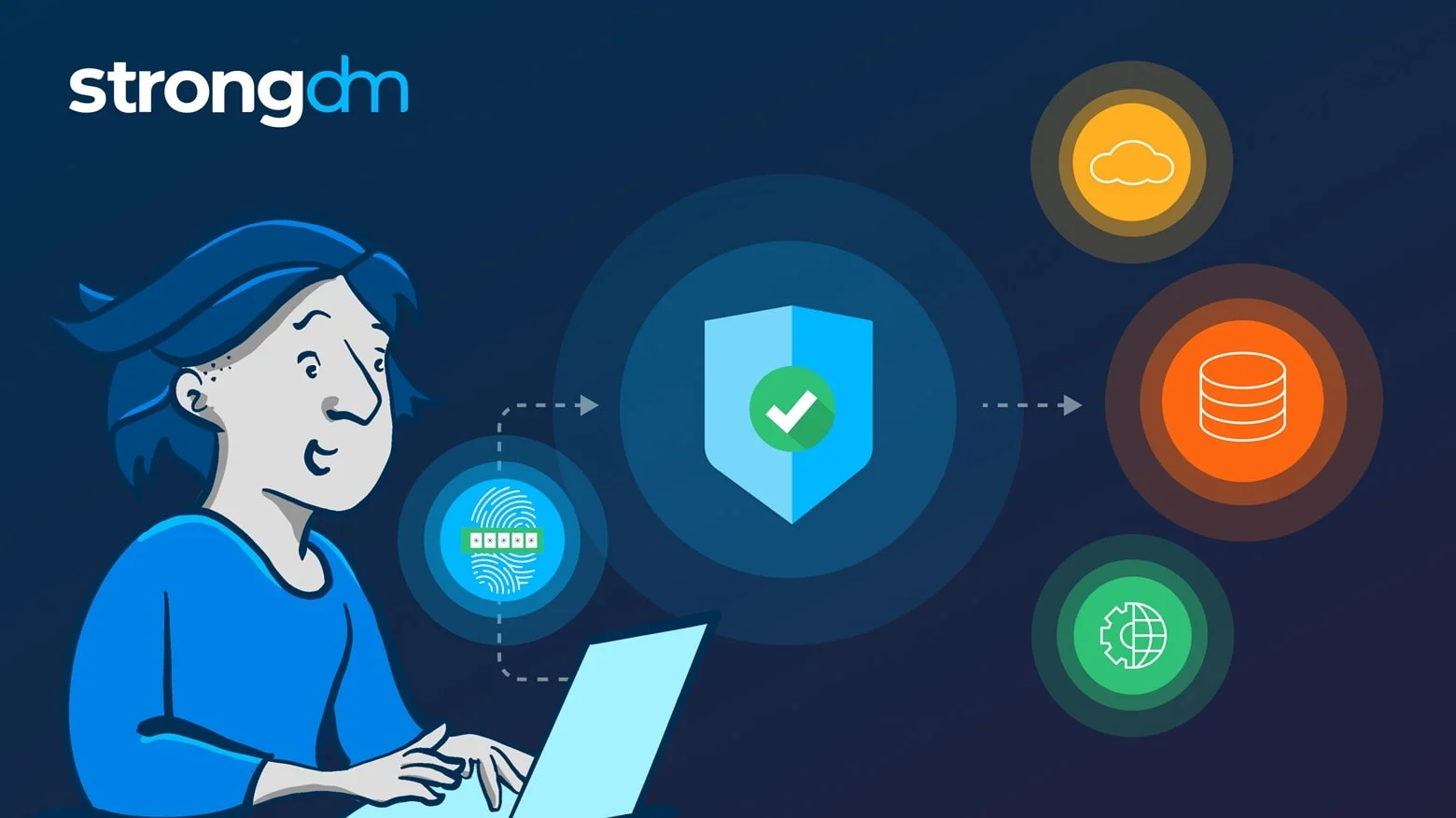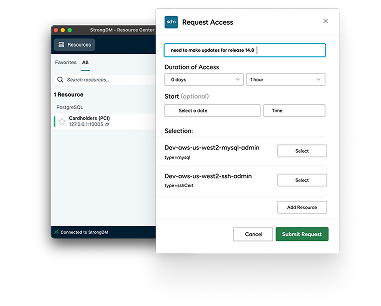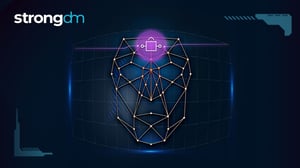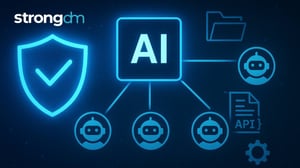What Is Fine-Grained Access Control? Challenges, Benefits & More


Written by
Fazila MalikLast updated on:
September 6, 2024Reading time:
Contents
Built for Security. Loved by Devs.
- Free Trial — No Credit Card Needed
- Full Access to All Features
- Trusted by the Fortune 100, early startups, and everyone in between
Organizations routinely face the frustrating challenge of balancing security and compliance with user productivity. In fact, 64% suffer daily or weekly productivity losses due to access issues. By choosing the right Fine-Grained Access Control (FGAC) solution, organizations can rest assured that their data is safe and compliant and that they can realize significant user productivity gains. In addition to improved access control, there are additional benefits, and this article will outline the various ways that FGAC delivers security, compliance, user productivity, and organizational efficiency value.
What Is Fine-Grained Access Control (FGAC)?
Fine-grained access control systems determine a user’s access rights past initial authentication to infrastructure, data, or resources. Unlike coarse-grained access control (CGAC), which relies on a single factor, such as role, to grant access, FGAC relies on multiple factors. For example, it may consider policies (policy-based access control, or PBAC), attributes (attribute-based access control, or ABAC), or a user’s behavior in a certain context (behavior-based access control, or BBAC).
Fine-Grained Access Control Challenges
While FGAC offers superior security, CGAC has traditionally been easier to implement. The advantages of FGAC, like greater granularity, context-awareness, and flexibility, can come with challenges including:
- Complex setup, which requires administrators to create rules and define variables; the planning and time investment needed may not be feasible for some companies.
- Mistakes in implementation, which can lead to access issues, productivity losses, security risk, and time-consuming rework.
If FGAC is too complicated or poorly implemented, users may resort to unsafe access practices, like sharing credentials, adopting shadow IT, or maintaining backdoor access. These things increase the organization’s exposure to risk and create operational inefficiencies.
StrongDM’s Zero Trust PAM platform with FGAC capabilities solves these common challenges with a simple setup for administrators and a seamless user experience. It offers a centralized admin control plane, centralized policy management, and identity provider integration that enables users to authenticate for access to all resources and data for which they are authorized.
What Are the Benefits of Fine-Grained Access Controls?
With FGAC, access security is managed with greater control, strengthened with better security checks, and simplified for optimal user experience. Let’s look closer at how FGAC can improve security, compliance, productivity, and efficiency.
Security and compliance
Fine-grained access control can greatly improve the security of an organization’s data, as well as help ensure compliance in the following ways:
- Assigning users specific roles and permissions lets organizations enforce access rules automatically, eliminating the inappropriate granting or denial of access, while simultaneously ensuring compliance with industry regulations such as ISO 27001, PCI, and HIPAA.
- User activity is monitored and logged, enabling visibility and simplified auditing in case of a security incident or compliance issue.
StrongDM's granular access controls allow organizations to centralize access control management and set appropriate access levels with precision. Its comprehensive solutions free customers to retire legacy tools, like PAM software and VPNs, and remove credentials from the hands of end users, helping to lower tool spend and reduce overall attack surface.
Improved job productivity
Aside from the enhanced security it offers—or because of it—fine-grained access control also results in a range of benefits to user productivity, including the following:
- With access to resources defined by roles or attributes, users can quickly and accurately determine exactly what they are able to access. This eliminates the need for long waits for approvals and streamlines workflows.
- Additionally, organizations can streamline processes for Just-in-Time access to their most sensitive infrastructure. Automated enforcement of these policies ensures only those with appropriate privileges can access certain resources.
StrongDM’s dynamic access rules and just-in-time least-privilege access allow administrators and staff, including DevOps and Engineering teams, to easily and securely access all the infrastructure and resources they need to do their jobs. This is dramatically simpler and ultimately more secure than provisioning standing access for 50, 100, or more resources.
Organizational efficiencies
Fine-grained access control empowers organizations to take control of their security with ease. As a result, they can conserve valuable time, labor, and expenses. For example:
- FGAC solutions enable administrators to quickly and effectively manage user permissions, automate processes for granting or revoking access rights, and gain visibility into user activity.
- Together, these capabilities allow organizations to better protect their data, while ensuring that users have the correct level of access to resources they need to do their jobs.
- As a result, organizations not only minimize the risk of unauthorized data access, breaches, and cyberattacks, but also cut down on manual labor and associated costs.
StrongDM’s simplified UX and central control plane do away with complex, distributed workflows, enabling a friction-free, intuitive admin experience for easy provisioning, deprovisioning, and management of access. StrongDM lets admins secure access to all accounts, not just privileged ones, and also implement just-in-time access and zero standing privileges.
Getting Started with Fine-Grained Access Controls: Implementation Steps
Getting started with fine-grained access control requires proper planning and preparation. To ensure an organization's security protocols are effectively implemented, here are four crucial steps to take:
1. Identify which systems require robust access control
First, develop a clear plan for setting up fine-grained access control, designating appropriate personnel, while being mindful of security concerns. Before jumping into the implementation process, teams should conduct a thorough assessment of the organization's systems and their corresponding requirements. Identify the critical assets, sensitive data, and resources that necessitate protection. Understanding the specific needs and potential vulnerabilities of the system is foundational to tailoring fine-grained access controls effectively.
2. Map out who requires access to each system
Organizations should carefully determine which users need admittance to each system, taking into account their roles within the organization and what systems they need to access in order to perform their specific job duties. Once this mapping is complete, organizations can start assigning permissions and appropriate access levels accordingly.
3. Define roles and permissions for access control management
Access control management entails allocating specific roles and responsibilities across an organization’s workforce to maintain security protocols, while still allowing users the privileges necessary to complete their duties efficiently. Roles such as system administrator or security officer ought to be designated based on the following:
- An individual’s technical expertise
- Their job responsibility for upholding security standards throughout your enterprise's IT infrastructure
4. Implement fine-grained access controls for each system
Last but not least, enterprises must execute their FGAC solution across all listed systems in order for it to become operational. To do so, they must establish authentication methods, such as passwords or two-factor authentication, along with policies overseeing how employees interact with certain resources within the company's IT infrastructure.
By following these simple steps, organizations can make sure their sensitive data remains secure, while permitting approved personnel sufficient levels of access to remain productive.
Conclusion
Fine-grained access control pulls off a feat many struggle with: Fortifying security and compliance, while actually improving user productivity. It combines the advantage of enhanced access security with additional improvements in compliance, productivity, and organizational efficiency. StrongDM makes fine-grained access control simple with our advanced, easy-to-use solution. Embrace the benefits of fine-grained access control book a demo with StrongDM today.
Next Steps
StrongDM unifies access management across databases, servers, clusters, and more—for IT, security, and DevOps teams.
- Learn how StrongDM works
- Book a personalized demo
- Start your free StrongDM trial

Categories:

About the Author
Fazila Malik, Sales Enablement Expert, as an accomplished Product Marketing Manager in the technology industry with over 5 years of experience, Fazila transitioned to a Sales Enablement leader position passionate about empowering go-to-market teams to excel in their roles. Throughout her career, she has worked with a range of technology products, including software applications and cloud-based solutions. Fazila is a member of the Product Marketing Alliance and an AWS Cloud Certified Practitioner. To contact Fazila, visit her on LinkedIn.
You May Also Like




